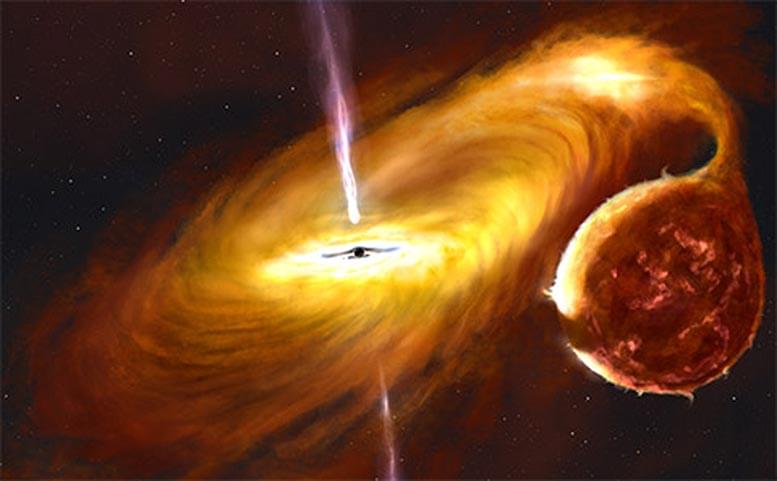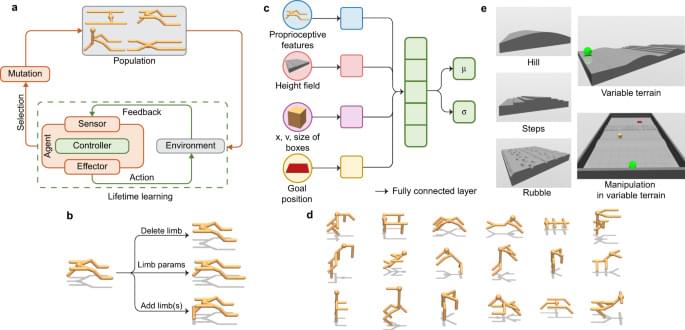#eldddir #eldddir_space #eldddir_homo #eldddir_future #eldddir_tech #eldddir_jupiter #eldddir_rockets.
Category: physics – Page 246

Key to resilient energy-efficient AI may reside in human brain
A clearer understanding of how a type of brain cell known as astrocytes function and can be emulated in the physics of hardware devices, may result in artificial intelligence (AI) and machine learning that autonomously self-repairs and consumes much less energy than the technologies currently do, according to a team of Penn State researchers.
Astrocytes are named for their star shape and are a type of glial cell, which are support cells for neurons in the brain. They play a crucial role in brain functions such as memory, learning, self-repair and synchronization.
“This project stemmed from recent observations in computational neuroscience, as there has been a lot of effort and understanding of how the brain works and people are trying to revise the model of simplistic neuron-synapse connections,” said Abhronil Sengupta, assistant professor of electrical engineering and computer science. “It turns out there is a third component in the brain, the astrocytes, which constitutes a significant section of the cells in the brain, but its role in machine learning and neuroscience has kind of been overlooked.”

Strange Black Hole Discovered in Milky Way With a Huge Warp in Its Accretion Disc
An international team of astrophysicists from South Africa, the UK, France and the US have found large variations in the brightness of light seen from around one of the closest black holes in our Galaxy, 9,600 light-years from Earth, which they conclude is caused by a huge warp in its accretion disc.
This object, MAXI J1820+070, erupted as a new X-ray transient in March 2018 and was discovered by a Japanese X-ray telescope onboard the International Space Station. These transients, systems that exhibit violent outbursts, are binary stars, consisting of a low-mass star, similar to our Sun and a much more compact object, which can be a white dwarf 0 neutron star 0 or black hole. In this case, MAXI J1820+070 contains a black hole that is at least 8 times the mass of our Sun.
The first findings have now been published in the international highly ranked journal, Monthly Notices of the Royal Astronomical Society, whose lead author is Dr. Jessymol Thomas, a Postdoctoral Research Fellow at the South African Astronomical Observatory (SAAO).

Embodied intelligence via learning and evolution
The authors present a high-resolution palaeomagnetic record for a Late Cretaceous limestone in Italy. They claim that their record robustly shows a ~12° true polar wander oscillation between 86 and 78 Ma, with the greatest excursion at 84–82 Ma.
The authors propose a new framework, deep evolutionary reinforcement learning, evolves agents with diverse morphologies to learn hard locomotion and manipulation tasks in complex environments, and reveals insights into relations between environmental physics, embodied intelligence, and the evolution of rapid learning.
An astronomer at Japan’s space agency is making simple animations that reveal the surprising physics of the solar system
As a scientist at both NASA and JAXA, James O’Donoghue has studied the planets. In his free time, he makes award-winning animations of them.

Bringing new life to ATLAS data
The ATLAS collaboration is breathing new life into its LHC Run 2 dataset, recorded from 2015 to 2018. Physicists will be reprocessing the entire dataset – nearly 18 PB of collision data – using an updated version of the ATLAS offline analysis software (Athena). Not only will this improve ATLAS physics measurements and searches, it will also position the collaboration well for the upcoming challenges of Run 3 and beyond.
Athena converts raw signals recorded by the ATLAS experiment into more simplified datasets for physicists to study. Its new-and-improved version has been in development for several years and includes multi-threading capabilities, more complex physics-analysis functions and improved memory consumption.
“Our aim was to significantly reduce the amount of memory needed to run the software, widen the types of physics analyses it could do and – most critically – allow current and future ATLAS datasets to be analysed together,” says Zach Marshall, ATLAS Computing Coordinator. “These improvements are a key part of our preparations for future high-intensity operations of the LHC – in particular the High-Luminosity LHC (HL-LHC) run beginning around 2,028 which will see ATLAS’s computing resources in extremely high demand.”

A Vast “Magnetic Tunnel” May Surround Earth and Our Entire Solar System
A University of Toronto astronomer’s research suggests the solar system is surrounded by a magnetic tunnel that can be seen in radio waves.
Jennifer West, a research associate at the Dunlap Institute for Astronomy & Astrophysics, is making a scientific case that two bright structures seen on opposite sides of the sky – previously considered to be separate – are actually connected and are made of rope-like filaments. The connection forms what looks like a tunnel around our solar system.
The data results of West’s research have been published in the Astrophysical Journal.

Physicists Created a Supernova Reaction on Earth Using a Radioactive Beam
For the first time, physicists have been able to directly measure one of the ways exploding stars forge the heaviest elements in the Universe.
By probing an accelerated beam of radioactive ions, a team led by physicist Gavin Lotay of the University of Surrey in the UK observed the proton-capture process thought to occur in core-collapse supernovae.
Not only have scientists now seen how this happens in detail, the measurements are allowing us to better understand the production and abundances of mysterious isotopes called p-nuclei.
‘Time is elastic’: Why time passes faster atop a mountain than at sea level
The idea of ‘absolute time’ is an illusion. Physics and subjective experience reveal why.
Ancient black holes: New research reveals a surprising truth
Is there anything out there?
The concept of primordial black holes has waxed and waned in scientific circles over the decades. At first, it was a fascinating possibility. After all, the first few seconds of the big bang were pretty heady times, and there may have been large enough differences in density to generate black holes of all sorts of sizes, from microscopic to gigantic. But repeated observations have continually been unable to come up with any conclusive evidence for their existence.
And then there’s dark matter, the mysterious substance that makes up the vast bulk of matter in the cosmos. Scientists aren’t exactly sure what lies behind dark matter, and primordial black holes are a tantalizing possibility.
But if the universe is flooded with innumerable small black holes, eventually some of those black holes will find each other and merge. And our gravitational wave observatories should be sensitive enough to detect the resulting ripples in spacetime.